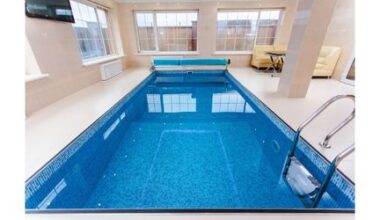Knowing How to Make a Successful Water Leak Insurance Claim if your home has water damage is essential. This is because water is one of the biggest risks to your home and possessions.
Furthermore, damage caused by specific water issues, such as burst pipes, may be covered by homeowners insurance.
Additionally, one of the most frequent and expensive categories of homeowner insurance claims is water damage (including damage from freezing).
Statistically, according to the Insurance Information Institute, nearly one in fifty homeowners report water damage or freezing each year. This makes up 29% of all homeowners insurance claims.
Also, water damage or freezing claim typically costs $11,098.
Keep reading to see How to Make a Successful Water Leak Insurance Claim.
What is Water Leak Insurance
Most homeowner insurance policies include some protection against unexpected and unintentional water damage called “water leak insurance.” The negligence of the homeowners or failing to keep the house in good shape are not covered by this insurance.
However, you should know that when thinking about How to Make a Successful Water Leak Insurance Claim, flooding isn’t covered.
Additionally, many types of water damage to real property may and should be avoided by good management. Water leak insurance does not cover negligence.
Furthermore, this can be as simple as keeping an eye out for ceiling drips during a downpour. Or repairing a broken pipe under the kitchen sink before mildew starts to proliferate.
However, a significant component of homeowner insurance claims is water damage. Water was the third-leading cause of claims from 2014 to 2018, with an average of $10,949 per claim. This was according to the Insurance Information Institute.
Also, after wind and hail damage, claims for water damage and freezing were made the second most frequently. Each year, water leak or freezing-related property damage claims affect about one in every fifty insured houses.
Water damage is seven times more common than fire damage. And five times more likely to cause damage to your house than a claim for theft.
See also: WATER DAMAGE CEILING REPAIR: How to Fix a Damaged Ceiling
What Qualifies As Water Damage?
Water damage refers to any sort of physical damage to property produced by direct contact with water. Natural calamities such as floods, hurricanes, tornadoes, or torrential downpours can cause it. Leaky plumbing, burst pipes, and even a leaking roof are all potential sources of water damage in the home.
Types of Damages Covered by Water Leak Insurance
When thinking about How to Make a Successful Water Leak Insurance Claim, you should know the damages this insurance covers.
In general, “sudden and unintentional” water damage (like a burst pipe) is covered. But gradual damage (like a leaking bathroom sink) is not.
Additionally, flooding, including damage from a hurricane’s storm surge, is also not covered.
Below are Damages Covered by Water Leak Insurance:
First, burst pipes are a common source of water damage covered by this insurance. This might involve a burst frozen pipe, but not if the house wasn’t adequately heated.
Second, accidental leaks from appliances like a damaged washing machine or dishwasher or from leaking plumbing are covered
Third, water damage that results from a fire. Caused by water used to put out the flames, such as sprinkler system water or fire department hose water.
Additionally, water damage resulting from a roof leak. This includes injury from a storm or a tree falling on your roof.
However, remember that you will need to repair the damage to your roof quickly. Especially if an accident causes it (such as a tree falling on it). Failure to do so could lead to additional water damage that is not insured.
Furthermore, storm-related water damage, such as rain or hail damage is covered.
Also, if the damage was sudden and wasn’t brought on by a lack of maintenance, this insurance will cover it. Also, ice dams, such as ice that accumulates in your gutter and damages your home, may be covered.
Types of Damages Not Covered by Water Leak Insurance
You should know that some damages are not covered by this insurance. Check-out these damages before checking How to Make a Successful Water Leak Insurance Claim.
A normal water leak insurance under homeowners insurance policy won’t often cover the following common issues:
First, water damage most importantly, damage caused by floods is not covered by homeowner’s insurance. Flood water includes water from hurricanes, tsunamis, storm surges, overflowing rivers, and rainwater.
However, if you want protection from these issues, think about purchasing flood insurance.
Second, lack of upkeep or carelessness. Such as failing to fix a plumbing issue or failing to keep the heat on during freezing weather. These can result in water damage. They are covered by this insurance.
Third, intentional water damage, such as starting a fire in your house or purposefully shutting off the heat in the cold.
Additionally, ‘Earth movement’ damage from an earthquake, landslide, or mudslide is not covered.
For instance, if a pipe bursts as a result of an earthquake, water damage is probably not going to be covered. You must get a separate earthquake insurance policy if you want coverage for earthquake damage.
Next, water damage brought on by a sewage or drain backing up (unless you purchased special coverage for this problem).
Furthermore, leaks from a swimming pool or other constructions that cause water damage are not covered.
Additionally, damage to a foundation caused by seepage or leaks of water.
Also, the price to fix or replace the appliance that caused the water damage, such as a dishwasher or washing machine. This price is not covered by the insurance.
Finally, failure of the sump pump or associated equipment leading to water damage. For such, you might want to think about sump and water backup coverage.
How Can I Protect My Home From Water Damage?
Preventative measures are one of the finest ways to shield a house against water damage. The key is to perform regular upkeep and rapid repairs.
Also, keep in mind that only “sudden and accidental” water damage is covered by homeowner’s insurance. Ongoing maintenance concerns are not.
Therefore, it’s preferable to fix any issues, such as a leaky faucet, as soon as they arise.
Other actions you can do are as follows:
- First, water heaters should be drained twice a year to help avoid sediment buildup.
- Additionally, install smart water leak detectors that may notify you via email or phone. (Some detectors have the ability to automatically turn off the water to stop damage.)
- Also, inspect hoses going to and from washing machines, dishwashers, water heaters and refrigerators. If necessary, fix or swap out any damaged hoses.
- Furthermore, make any necessary repairs to your roof, such as replacing any missing, rotted, or broken shingles.
- Cleaning out the gutters on your roof is another smart move. A home’s foundation may become flooded by clogged gutters. This can cause water to collect there and seep into your basement.
- However, if you reside in a region with extremely low temperatures, take precautions to avoid frozen pipes. Maintain a minimum temperature of 50 degrees and take additional safety measures, such as insulating pipes.
- Additionally, your roof should be cleared of snow to avoid the formation of ice dams. Ice dams can form when snow melts and freezes on roofs and in gutters, causing damage to homes’ exteriors and interiors. You can reduce the likelihood of snow dams by clearing the roof of snow with a roof rake.
- Every fall, clear the leaves out of your gutters to lessen the possibility of clogged drains. This is because it can result in ice dams in the winter.
How Can You Tell Where A Water Leak Is Coming From?
- Keep track of the water bill.
- Take note of the Water Meter.
- Look for areas of greener grass.
- Examine the appliances and fixtures.
- Color the Toilet.
- Keep an eye out for Leaking Clues.
- Immediate Notification is provided by leak detectors.
Keep reading to see how to make a successful water leak insurance claim.
How to Make a Successful Water Leak Insurance Claim
Not informing your insurer of minor problems could complicate subsequent insurance claims. It may also cause a claim to be delayed if a bigger problem emerges later.
Below is step-by-step guide on How to Make a Successful Water Leak Insurance Claim:
Get the leak under control
You shouldn’t start any restoration work after filing a claim with your homeowner’s insurance. Until the insurer or the loss adjuster has evaluated the situation.
Gather your proof
Record as many images and videos as you can of the water leak’s origin. Also record videos of the damage it caused, and any other items that are pertinent to your claim.
Inform your insurance provider
Furthermore, inform your insurance provider of the issue as soon as you can. The majority of insurers have an emergency number you can call at any time.
Hire your own assistance
Additionally, you have the right to appoint a Loss Assessor at any time during the claim process. This person will manage the whole claim procedure on your behalf.
See also: WATER STAIN ON CEILING: Tips On How To Fix It
Meeting the Loss Adjuster
Your insurance provider will quickly assign a Loss Adjuster to begin the claim inquiry after you report the leak. You and the Loss Adjuster will have a fact-finding meeting in your house.
Loss estimators report
Following the meeting, the loss adjuster will draft a loss adjusters report.
Complete repairs
Furthermore, many insurers will prefer to use their own surveyors and builders.
However, it is very crucial to make sure you hire a Chartered Surveyor to evaluate the water leak damage.
Contents claim
For possessions that have been damaged as a result of the water leak, you or your Loss Assessor will create a claim.
Also, your claim must be as thorough as possible. It must include correct replacement values for all impacted items, regardless of how much content damage there is.
Conclusion
As promised, this article will show you How to Make a Successful Water Leak Insurance Claim. However, below are some final notes to take.
First, use steel-braided supply lines for washing machines. Also have older homes inspected by a qualified plumber every five years.
Additionally, repair old water heaters. And cut off the supply lines while the machine isn’t in use in order to reduce the risk of water damage.
Finally, when no one is home, avoid running the dishwasher or washing machine.
FAQs on How to Make a Successful Water Leak Insurance Claim in 2023
Homeowners’ insurance generally excludes water damage from floods. You’ll have to buy a flood insurance policy if you want coverage for flood damage.
Homeowners’ insurance generally covers mold caused by water damage. Especially if the water problem was covered by the policy, such as a burst pipe.
Homeowners insurance typically covers water damage from hurricanes. Such as rain that gets in through storm roof damage (unless your policy has a “roof exclusion”). But not water damage from rising flood water or storm surges.





